|
Newsletter on line. This newsletter, and previous editions, are available on the RUSI Vancouver website at: http://www.rusivancouver.ca/newsletter.html Wednesday Lunches The 15 Field Officers Mess holds weekly lunches, serving a 5 course, ‘homemade’ meal for only $15- you won’t find a better meal - or a better deal, anywhere. If you are in the area on a Wednesday, drop in and join us for lunch. Note: A contractor will be coming in to remove asbestos tiles from the bar area. This may mean that lunches might be cancelled for one Wednesday. We don’t have an exact date for the start of this project yet, so watch for notices from us. The Regt is away on exercise at the moment, so, in preparation for this project they cleared out all stock and basic equipment from the bar and we were informed it couldn’t be used until the project is completed. We can’t legally sell any wine, spirits or beer but patrons may bring their own wine and pay a corkage charge to the Mess. For those of you who don’t bring wine we will have a bar set up to sell lunch tickets and a small selection of pop and juices with glasses and ice. We hope you will come out and support our efforts. World War 2 - 1940 John Thompson Strategic analyst quotes from his book “Spirit Over Steel” Aug 5th: OKH (Oberkommando des Heeres – the German Army’s High Command) presents operational plans for the invasion of the USSR to General Halder – they call for a major advance on Moscow, with a side offensive towards Kiev. The Italians snap up a couple of minor border towns in British Somalia. Aug 6th: The Italians capture Odweina in British Somaliland. Aug 8th: 1,485 sorties mark the first phase of the Luftwaffe’s offensive on England by hitting convoys and seaports. In today’s air combat over the Channel, the Luftwaffe loses 31 aircraft to the RAF’s 20. Canada and the US form a Joint Defence Planning Board – which still exists and meets regularly. Aug 9th: The French New Hebrides, Chad, French Equatorial Africa, Cameroon and some Pacific Islands declare for the Free French and DeGaulle. The British start to pull their garrisons out of Shanghai and Tientsin. Aug 10th: Britain decides to send the bulk of its current tank holdings in the UK to the Middle East, while the threat of a German invasion is looming, new tanks are being built and the old ones are urgently needed in Egypt. Aug 11th: The Luftwaffe raids Weymouth and Portland, the RAF loses 32 aircraft to 38 German. Italian troops engage British defensive positions near Tug Argan in Somaliland. OAS Clawback Adds to the Pain Jamie Golombek, Managing Director, Tax & Estate Planning, CIBC Wealth Advisory Services 2015-07-11 National Post If you are 65 years of age or older, you're likely collecting Old Age Security each month. The amount of OAS you get, which is indexed quarterly to inflation, is based in part on the number of years you've lived in Canada after age 18. It's also based on your annual, individual "net income," which may not be the same as what the Canada Revenue Agency considers your "taxable income." For July through September 2015, the maximum monthly OAS amount you could receive is $564.87. This benefit is reduced by 15 per cent for each dollar of your net income above $72,809, and is fully eliminated once your net income reaches $117,954. The difference between your net and taxable income amounts may result in an unexpected loss of OAS payments. Take, for example, the recent case of a retired Nova Scotian steelworker who was forced to repay nearly $3,300 of OAS he received in 2012. The taxpayer was injured in 1969 when molten steel struck his thigh, leaving him with a bad burn. He continued to have pain in the affected area, which increased over time such that by 2011 he was diagnosed with Complex Regional Pain Syndrome. He made a claim to the Workers' Compensation Board of Nova Scotia and in 2011 he received an award of nearly $54,000. While the WCB issued a T5007 slip for that amount, the taxpayer did not include it in his income when he filed his 2012 return, as he believed that a T5007 slip "should not have been issued to him." It was his belief that the lump sum he received from the WCB was a "non-economic loss award for pain and it was not to be included in income ... it was an award of damages for the pain he suffered." The issue before the Tax Court, however, was not that he owed tax on the $54,000 - he did not (WCB compensation payments are included in net income, but are then deductible in computing taxable income.) The problem, however, was that the CRA clawed back $3,300 of OAS on the basis that his net income for 2012 included the non-taxable WCB payment, bringing his total 2012 income to nearly $110,000. Under the Income Tax Act, "compensation received under an employees' or workers' compensation law of Canada or a province in respect of an injury, a disability or death" must be included in net income, which is used in the calculation of how much OAS you get to keep. Prior jurisprudence has confirmed that all lump sums, including retroactive amounts, from the WCB must be included in income for the purposes of calculating the OAS clawback. The Tax Court judge, citing an earlier decision, said "the phrase 'in respect of' has the widest of possible meanings and includes the pain suffered as a result of an injury." The judge felt that "the lump sum received by the (taxpayer) was in respect of the injury he sustained in 1969 .... But for the injury, there would have been no award of money from the WCB." The taxpayer has appealed his case to the Federal Court of Appeal.  Medium Range Radar for the Canadian Army David Pugliese, Ottawa Citizen July 22, 2015 Minister of Public Works and Government Services Diane Finley answers a question during question period in the House of Commons on Parliament Hill in Ottawa on Monday, June 15, 2015. Sean Kilpatrick /The Canadian Press The Harper government’s defence equipment/infrastructure announcements are expected to continue in the coming weeks. Defence Watch has been told that besides more DND infrastructure announcements (25 so far I believe in the last three weeks), there will be two actual equipment announcements – the awarding of the contract to provide a Medium Range Radar for the Canadian Army and the awarding of the contract for the first phase of the Integrated Soldier System Project or ISSP. (Defence Watch readers will have already noted the medium truck contract for the Army). Public Works Minister Diane Finley highlighted both ISSP and the Medium Range Radar project when she spoke at the CANSEC 2015 defence trade show in Ottawa. The Medium Range Radar will be used for hostile weapon locating and air surveillance. Some of the products that were bid also include an artillery ranging capability for friendly fire and a counter rocket/artillery/mortar mission when integrated with a weapon system. For instance, Rheinmetall Canada and its partner IAI ELTA highlighted their ELM-2084 Multi-Mission Radar (MMR) for the project. The MMR is an advanced three-dimensional, S-Band radar supporting modular and scalable architecture, and is capable of detecting enemy threats from Rockets, Artillery and Mortars attacks while simultaneously conducting Air Surveillance, according to the companies. The MMR is able to detect rockets, artillery and mortars, at ranges up to 50km, and can process 100 targets per minute. In regard to ISSP, there are some new developments which might take the wind out of the sails on the first phase contract award. General Dynamics Mission Systems Canada says it has already surpassed ISSP capabilities with its development of militarized smart phones and other support equipment. (See article in the July 28 newsletter). Meanwhile, the Conservatives continue to maintain that all the announcements have nothing to do with the federal election in October. 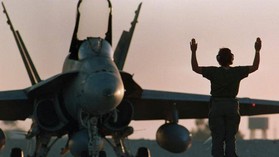 Canadian Bombing Mission Against ISIS Misfires SCOTT TAYLOR July 12, 2015 A Canadian CF-18 gets the go-ahead for takeoff. During the three months since the Conservatives authorized themselves to bomb targets in Syria, only three such missions have been launched. (The Canadian Press) In the early heady days last fall, when Canada first deployed CF-18 combat planes to battle ISIS militants in Iraq, there was keen media interest in the conflict. The good guys were off to smite the evil-doers and the Conservative government felt that a six-month time frame ought to do the trick. Once our fly boys actually started dropping their explosive ordnance, the early reports of their success against ISIS seemed a little exaggerated. One early attack near the city of Fallujah destroyed a bulldozer and a couple of dump trucks. Military officials told the media that ISIS had intended to use this construction equipment to dam up the Tigris River in order to flood entire communities. In other words, thanks to the RCAF, a genocide was averted. ISIS may have attained an almost mythical status for their capacity to commit atrocities, but it would take a hell of a lot more major engineering equipment to even attempt to dam the mighty Tigris. As the weeks dragged on into months of the coalition air campaign, officials explained that the dearth of actual targets engaged by the RCAF was due to ISIS having been contained. The failure of ISIS to provide the allies with clearly identified combat vehicles or troop formations led Canadian officials to claim that this meant ISIS was now “on their back foot.” This is an old boxing axiom that means you have your opponent off balance and in a defensive posture — right where you want him. That was the situation on March 30, when the Conservative government voted to extend the Iraq commitment by another 12 months and to expand the target area into the sovereign territory of Syria. One of the claims made for Canada to violate international law by bombing targets in Syria was that it was necessary in order to continue the downgrading of those ISIS forces that had been forced to retreat into Syria. Now, our pilots were going to seek them out in their hidey-holes. Victory seemed ever so nigh. Then came the unexpected ISIS offensive in mid-May against the Iraqi government forces in the city of Ramadi. Despite desperate allied air intervention, ISIS captured the city and, along with it, a last arsenal of US-supplied weapons, ammunitions and combat vehicles. Turns out that if ISIS was on its back foot, it was only to wind up for a haymaker blow. At the most recent technical briefing, hosted by the Defence Department last Friday, it was acknowledged that during the three months since the Conservatives authorized themselves to bomb targets in Syria, only three such missions have been launched. The reason given for the paucity of bombing attacks is the fact that the allied air force has very few actual spotters on the ground to clearly identify ISIS targets. This would also explain why the allies mistakenly thought ISIS forces in Iraq had retreated into Syria when they were in fact planning a massive offensive. All of this brings us back to the earlier claims by Canadian officials that our participation in the air campaign had successfully contained ISIS. That would come as a bit of a shock to the residents of Ramadi, who now find themselves toiling under the black flag of ISIS. If one pulls back a little from the immediate Iraq and Syria situation, it becomes quite clear that ISIS is anything but contained. In war-ravaged post-Gadhafi Libya, ISIS has quickly become a dominant force amid the anarchy that pervades. The April 19 brutal mass decapitation of kidnapped Ethiopian Coptic Christians firmly established ISIS as the big boy on the block in Libya. Then we have the June 26 beach attack against tourists in Tunisia, which appears to be a harbinger of an ISIS offensive to destabilize that nation as well. There is also the good news-bad news story that US drones have killed Shahidullah Shahid, the ISIS commander in Afghanistan. The good news is that they killed him; the bad news is that ISIS is now present in Afghanistan. If Canada is committed to another nine months in Iraq at a total cost of $500 million to not even “contain” ISIS, it is time to review our strategy. Remembering the Warsaw Uprising Members of RUSI Vancouver and the Vancouver Artillery Association you are invited: To: Remembering the Warsaw Uprising Ceremony When: Sunday, August 16 2015 - 10:00 – 11:00 am Where: Victory Square, Vancouver, BC Six Polish-Canadian veterans from the Vancouver area will be honoured on Sunday, August 16th for their bravery and dedication in the fight for a free Poland during the 1944 Warsaw Uprising in World War Two. There is a Canadian connection with the Warsaw Uprising of 1944 because allied air forces, including the RCAF and RAF, dropped food and military supplies to the Polish fighters. These veterans and others who fought in the uprising were forced to flee their homeland after the war. Many later became Canadian citizens and the six being honoured eventually settled in the Vancouver area. Because they fought for a Free Poland the veterans were later declared “Cursed Soldiers” by the communists that took over Poland, and their Soviet patrons. Today these men are the pride of Poland. At the ceremony at Victory Square the six veterans will be decorated with the Polish Golden Cross of Merit by Krzysztof Olendzki, the Consul General of the Republic of Poland in Vancouver. Kazimierz Bartłomiej Duchowski, Private „Włodek” Andrzej Miedzianowski, Ensign „Jasieńczyk” Bogusław Benedykt Nizio, Sergeant „Błyskawica” Jerzy Roman Piros, Private „Roman” Zenon Tomasz Przybylak, Private „Synek” Jerzy Steinmetz, Private „Kamieniecki” The Provincial Colour Guard of the Army, Navy and Air Force Veterans in Canada will participate in the ceremony.  The Supersonic Nazi Rocket Bomber That Could Destroy Any City It is May 1945, Nazi Germany has been defeated and the former Allies are now trying to get their hand on as much of the Nazi developed technology as they can. It is well known that Wernher von Braun and his V2 missile was the foundation of the American Space program but that was not the only rocket that the Nazis were developing. Starting in 1942, after the United States have joined the war against the Nazi’s and Japan the Germans believed it was time to develop weapons that could strike back and hit the Americans back home. The “America bomber” project was started which focused on a long range, piston engine bomber that could cross the Atlantic ocean and hit the East coast cities. This project ultimately delivered two working prototypes, the Messerschmitt Me 264 and Junkers Ju 390, which actually took to the air but never tried to cross the Atlantic. A far more ambitious plan was launched by Eugen Sänger and Irene Bredt, they envisaged a piloted rocket bomber that could take off from a V-1 like ramp and then almost go into orbit before being able to bomb any city on earth. A very long glide would take it back to its landing site after which it could be used again. According to Popular Science the key to his design’s success was its shape. Small wings, a pointed front, thin leading edges, and a flat bottom made for a vehicle that could skip off the lower layers of the atmosphere like a stone skipping across a still pond. The flight would only be partially powered; rocket propulsion would launch it on an arcing trajectory, and thanks to its flat bottom, it would skip and glide unpowered to its destination with a pilot at the helm.  Škoda-Kauba Sk P.14.01 ramjet-powered emergency fighter. via Wikipedia Škoda-Kauba Sk P.14.01 ramjet-powered emergency fighter. via Wikipedia The Nazi’s gave this rocket bomber the code name “Slibervogel” or Silver Bird. Had this vision become reality, together with a progress that was made towards developing an atomic bomb, the consequences would have been frightening indeed! Luckily for the rest of the world, even the Germans thought this plan too ambitious and only a scale model was ever built before this plan went into the drawer for good. Sänger kept working for the Nazi’s and his prime achievement was the development of the Škoda-Kauba Sk P.14 Ram Jet as part of the Third Reich defense effort against the devastating allied bombing raids. Only parts of the aircraft had been built when the project was terminated because the war ended. After the war ended Eugen Sänger and Irene Bredt worked for the French and helped set up the French Space agency. He was smart enough to see that working for Staling wasn’t his thing when they tried to kidnap and or convince him to come work for the USSR. He died in 1964 in Berlin, Germany. PNE 2015 HEROES’ OPENING WEEKEND - SAT, AUG 22 & SUN, AUG 23 - 11am- Late NEW this year – includes a free guest! FREE gate admission for First Responders and a guest. Promotion is to honor those who put their life on the line by actively responding to the front line emergencies occurring out in our communities. Valid for regular member police (City and RCMP), ambulance workers, firefighters, military & veterans, search & rescue and coast guard, plus one guest. Proof of membership must be produced at the gates. Guest does not require ID. 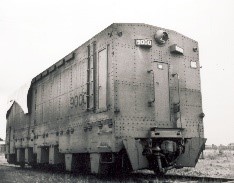 Who is it? Last Week: This is an early diesel electric locomotive (one of two built in 1928) after it was armoured and had a new power pack installed. They were to replace the (unarmoured) steam locomotives pulling the Canadian National No 1 Armoured Train along the Skeena River from Prince Rupert to Terrace. Both locomotives were modified but it took over a year to get the new engine/generators sets and by the time the two locomotives were ready to use, the train had been taken out of service as the threat had diminished. The train was equipped with large searchlights and a 75-mm gun. Two Bofors 40-mm anti-aircraft guns protected against any Japanese warplanes that may be launched from aircraft carriers, submarines or from captured bases along the BC coast; the submarine threat being the most likely. One infantry company - of three platoons, together with a number of gunners, provided the manpower; they were tasked in rotation from the units of the infantry brigade stationed in Terrace. The soldiers were equipped with light weapons and in addition had 3 in mortars. Two steel-covered coaches housed the kitchen, headquarters and a first-aid room. We had several replies on this picture. There are obviously many train enthusiasts in our group. 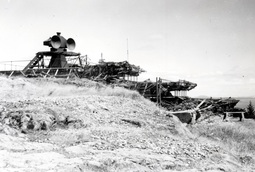 This Week: Well, one’s faith in anoraks was certainly reaffirmed last week by the keen response of avid train-spotters. It is a sad fact that we have very few photos of choo-choos in our collection, but, should we receive any of a camouflaged nature, such will be included in future quizzes. This week, however, we appeal to techie-types. As you know, the days of direct fire are more or less gone, although a Fijian member of the SAS did get an MC for doing such with a 25 pdr. in Oman back in the 1970s. Since the late Victoria era, indirect fire has become the done thing. In order to do so, all manner of gadgets have been developed, from simple field glasses to the latest drones and satellites. This week’s photo dates from the early 1950s, and comes, yet again, from the extensive collection of a younger Vic Stevenson. It is a gadget, of the type mentioned above. However, its exact designation is not noted on the photo. Can you, dear reader, enlighten us? We know it isn’t Google Goggles, but beyond that, we are stuck. Ideas can be sent to the editor, or to the author, John Redmond ([email protected]). All answers are appreciated, especially the wrong ones, which provide our extensive editorial staff with a bit of a laugh. For a larger photo email [email protected] |
Archives
June 2024
|

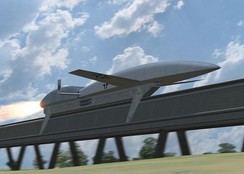
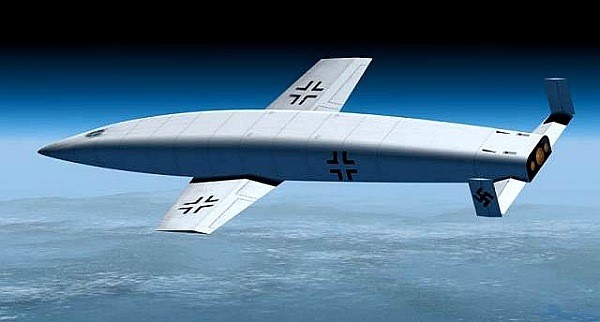


 RSS Feed
RSS Feed